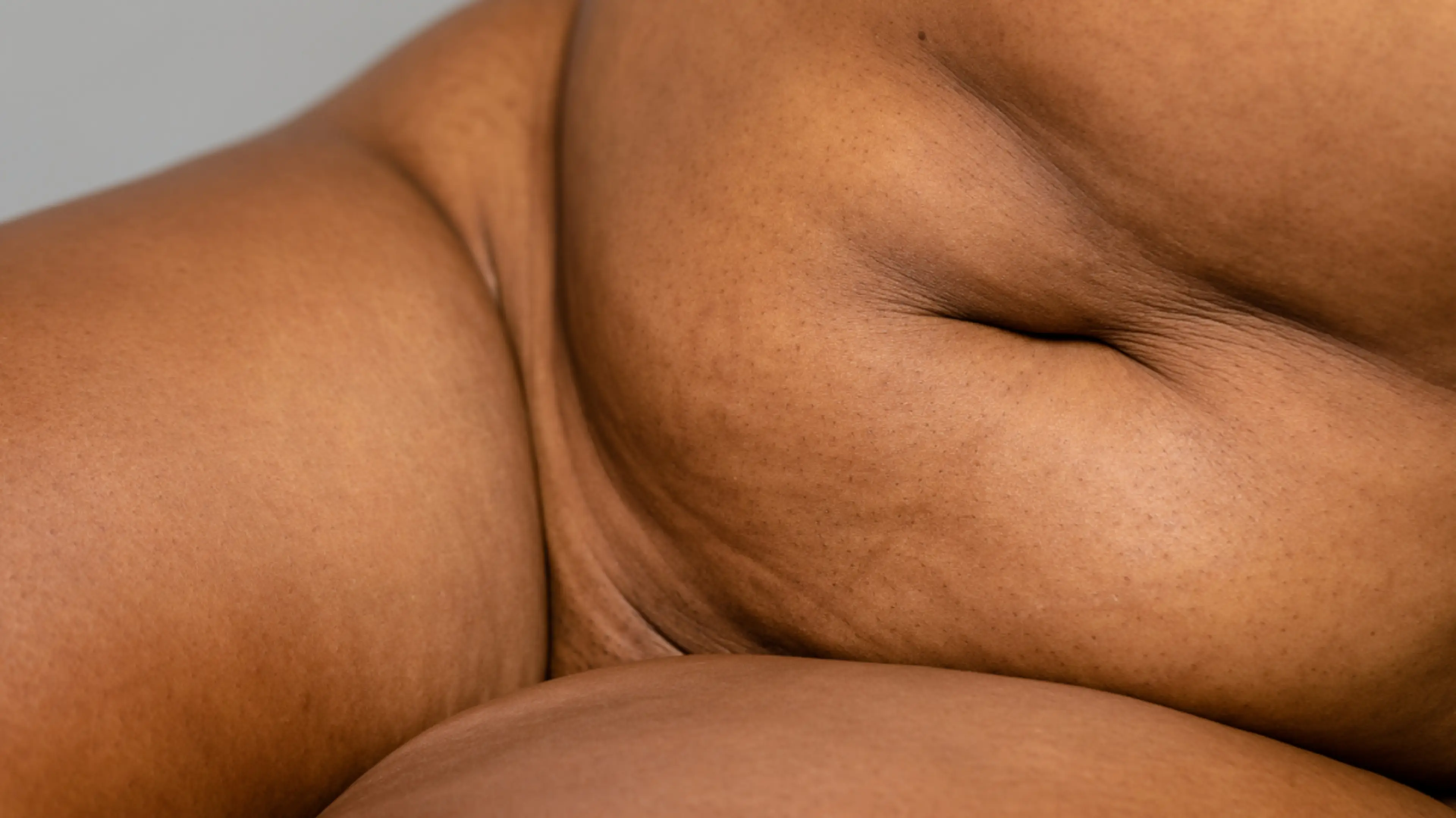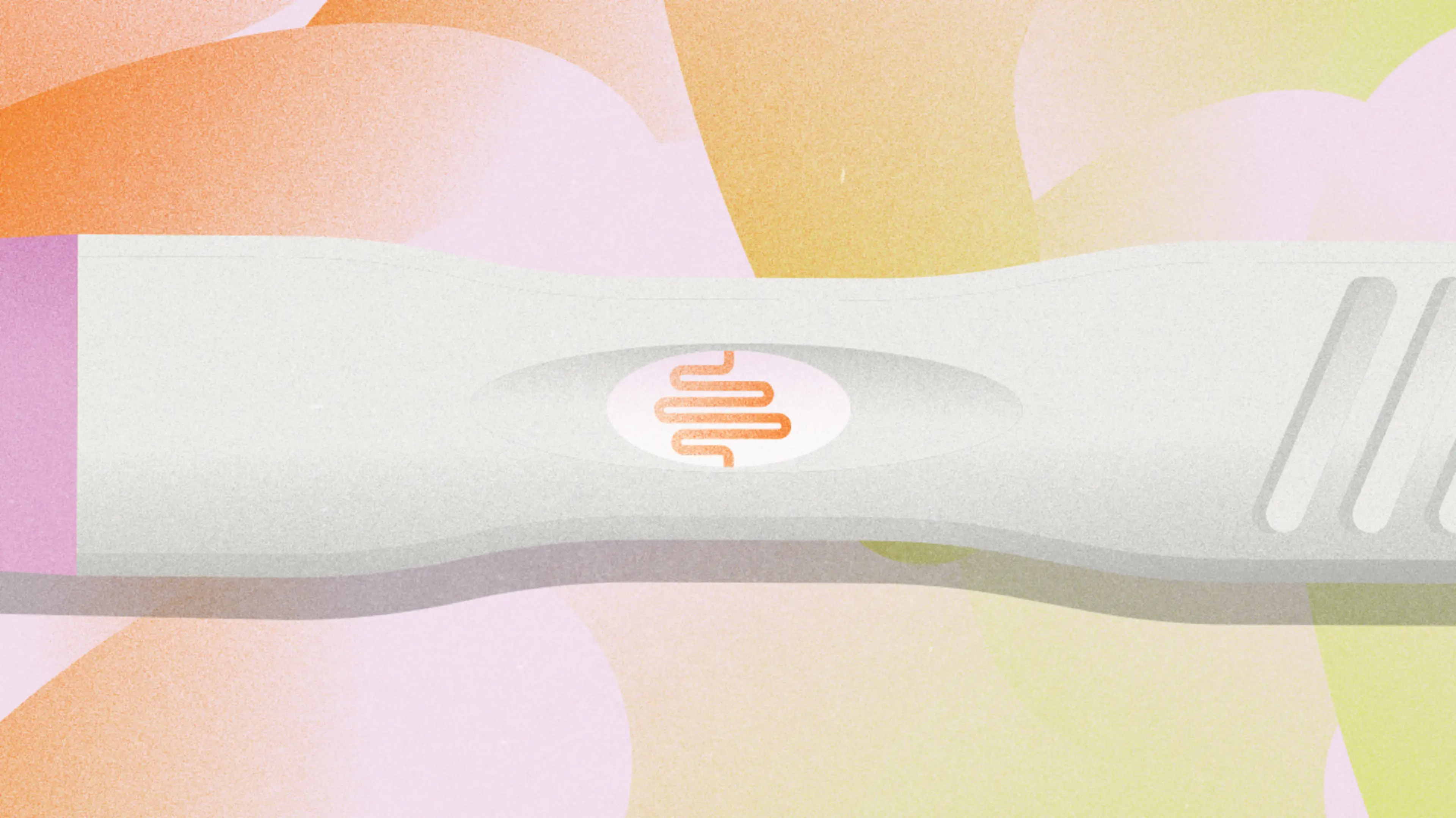TLDR: In very early pregnancy, an embryo attaches to your uterine lining, which is known as implantation. In some cases, it can cause cramping, which can be confused with period cramps. They mean two very different things, so here are some hints for figuring out whether they’re period or implantation cramps.
If you’re currently trying to get pregnant, the two-week wait between ovulation and taking a pregnancy test can be excruciatingly long. With every new little sensation or twinge, you may be wondering, “Am I pregnant?”
Adding to that confusion, some women experience cramping during these two weeks. What’s confusing is that this cramping could be due to your approaching period—or it could be implantation cramping, meaning you’re pregnant.
“Implantation cramping is far less common than the typical cramping experienced during a period, but implantation bleeding can occur 10-14 days after conception when an embryo attaches to the lining of the uterus,” says Dr. Laura Meyer1 , a reproductive endocrinologist, and partner at Illume Fertility. “This process can cause light bleeding or spotting, which can be confusing to those wondering whether they are newly pregnant or simply starting their period.”
While you may not know 100% what your cramping is coming from until you take a pregnancy test, it may help give you peace of mind knowing that what you are feeling is common.
Let’s break down what exactly implantation cramping is and how it compares to period cramps.
What Is Implantation?
Implantation2 occurs very early in pregnancy and is when the embryo attaches to the uterus. Before implantation happens, an egg is released from the ovaries. It then travels down through the fallopian tubes, where it can be fertilized by sperm. If it’s fertilized, it continues to move down into the uterus and begins the implantation process.
For implantation to happen, a delicate balance of the hormones progesterone and estrogen must be achieved. Without this balance, the uterus will not be able to accept the fertilized egg. Implantation failure accounts for two-thirds of pregnancy loss.
Successful implantation usually occurs two to four days after the fertilized egg enters the uterus.
What Is Implantation Cramping?
After the fertilized egg travels to your uterus, it begins to burrow in the lining. This can sometimes lead to implantation symptoms, which may cause a dull pain or twinge in the lower to mid-abdomen. Many women don’t realize they’re experiencing implantation cramps because they assume the feeling is from their approaching period.
Some women report that implantation cramps may also be accompanied by light spotting, also known as implantation bleeding3 .
“Implantation bleeding tends to be much lighter and briefer than a typical period,” says Dr. Meyer. “It often presents as pink spotting and occurs with minimal or no cramping. Bleeding that is heavier, darker in color, lasting several days or accompanied by clots is likely to be a period.”
There is no specific research on whether or not implantation causes spotting, but one study shows that this spotting may be from the luteal-placental shift4 . This is when the placenta is developed enough to start producing hormones. This shift usually happens around the five to eight-week mark.
How Are Implantation Cramps Different Than Period Cramps?
The primary difference between implantation and period cramps is the cause. During implantation, the egg has been fertilized by sperm, and it attaches itself to the uterus. This process only happens during early pregnancy.
You may or may not feel this sensation during your pregnancy. If you’ve had multiple pregnancies, you may be able to recognize the feeling of implantation before you take a test.
Your period, on the other hand, comes when the egg that is released doesn’t get fertilized by the sperm. That lack of fertilization allows the egg to continue to the uterus. It will then be flushed out of your vagina, along with the uterine lining—aka your period.
This process happens about every 28 days unless you’re pregnant or have other medical issues that cause you not to ovulate or menstruate.
Period cramps are caused by high levels of prostaglandins5 —hormones that reduce or stop blood flow to the uterus. This reduction in blood supply also deprives the uterus of oxygen, which can cause contractions and discomfort.
@expectful Undecided? 🤔 Good rule of thumb — keep an eye out for any new or different feelings from your usual period. #whattoexpect #pregnancy #pms #rpegnancysymptoms #healthandwellness #expectful ♬ original sound - expectful
How Can You Tell If Cramps Are From Implantation?
Implantation cramping may feel a lot like mild PMS cramps or period cramping. While it’s hard to know if your cramps are from your impending period or because you’re newly pregnant, you may be able to differentiate between them if you recognize your own natural rhythm. Does this time feel different than your normal period? Is the pain more or less manageable? Do you not usually experience cramping during your period? Listen to your body and trust in yourself.
Aside from this, the only way to know is to wait it out a little while and see if your period comes. If it doesn’t come on or around the 28th day of your cycle, then take a pregnancy test to confirm.
Are Implantation Cramps Common?
It’s hard to say if implantation cramps are common or not because there’s very little research surrounding implantation cramping. Most of what we know is anecdotal, but many women have reported feeling some sensation during implantation.
If you’re actively trying to become pregnant, you may be more attuned to your body at this time, and able to feel slight changes. If you’re not trying, you may just assume what you‘re feeling is the beginning of your period.
How Long Do Implantation Cramps Last?
The duration of implantation cramps varies; some women may experience a slight twinge here and there, while others may have mild to moderate cramping for one to three days, or more. It all depends on the person.
What Do Implantation Cramps Feel Like?
Women who have experienced implantation cramps have described it in different ways. Some say it feels similar to a dull period cramp. They have also been described as a twinge or a tingling sensation. Some may have more moderate aching.
Since implantation happens in your uterus, the cramps are most likely to be in the lower, and middle abdomen. You may also feel a dull ache in your lower back. You might also note that implantation cramps usually don’t favor one side.
How to Ease Implantation Cramp Discomfort
Implantation cramps can be uncomfortable. If you want to help ease your pain, try using heat. A warm bath or slightly warm heating pad for about 10 minutes can help—just make sure you don’t use anything too hot in case you’re pregnant.
You can also try listening to a meditation to help relax. Meditation also can help ease your stress if you’re anxious to find out if you’re pregnant. In addition to this, mindfulness meditation has been shown to decrease the intensity of painful stimuli6 by as much as 40 percent.
Implantation cramps shouldn’t cause severe pain. If they’re very painful, contact your doctor to rule out severe conditions like ovarian cysts, ectopic pregnancy, or early signs of miscarriage.
What Are Other Early Signs of Pregnancy?
Implantation cramping is just one sign of early pregnancy. Women may experience other symptoms during the early weeks of pregnancy. For some, these symptoms may be very similar to PMS symptoms, which can be confusing if you’re waiting to take a pregnancy test.
Most of these symptoms are due to hormonal changes in the body and can include:
Headache
Bloating
Fatigue
Moodiness
Breast tenderness
Change of appetite
Frequent urination
Nausea
When you’re pregnant, your hormones begin changing as soon as the egg is fertilized. These hormonal changes can cause several different symptoms. Some women may experience no symptoms at all, while others experience every possible symptom there is.
How Soon Can You Take a Pregnancy Test?
If you suspect your cramping is due to implantation and your period is overdue, it’s time to take a pregnancy test.
Pregnancy tests measure hCG7 —a hormone created by cells in the placenta. HCG sends a message to the ovaries to make more progesterone. Progesterone is essential for maintaining the pregnancy and helping the uterus grow.
Pregnancy tests can measure hCG about three to four days after implantation, but if you aren’t actively trying to conceive, you may not know exactly when implantation has occurred. If your cycle averages 28 days, and your egg is fertilized, implantation happens around days 20 to 26. This means you should be able to see a positive pregnancy test around days 24 to 30.
Usually, your best bet is to wait until you’ve missed a day of your period to take a pregnancy test.
Conclusion
Implantation cramping is a sensation that may occur when a fertilized egg attaches itself to the uterine lining. This cramping can feel like mild to moderate period cramps for one to three days. It can be a slight twinge and nothing more. Some people feel them, while others don’t. Period cramps are different because they’re accompanied by the shedding of your uterine lining and an unfertilized egg.
You may be able to tell if your cramps are from implantation or your period if they feel different than what you usually feel during menstruation. You also may be able to tell the difference if you have had other pregnancies. During implantation, you may also see some very light spotting.
The best way to know if your cramping is from implantation or period is to take a pregnancy test once you have missed a day or two of your period.











